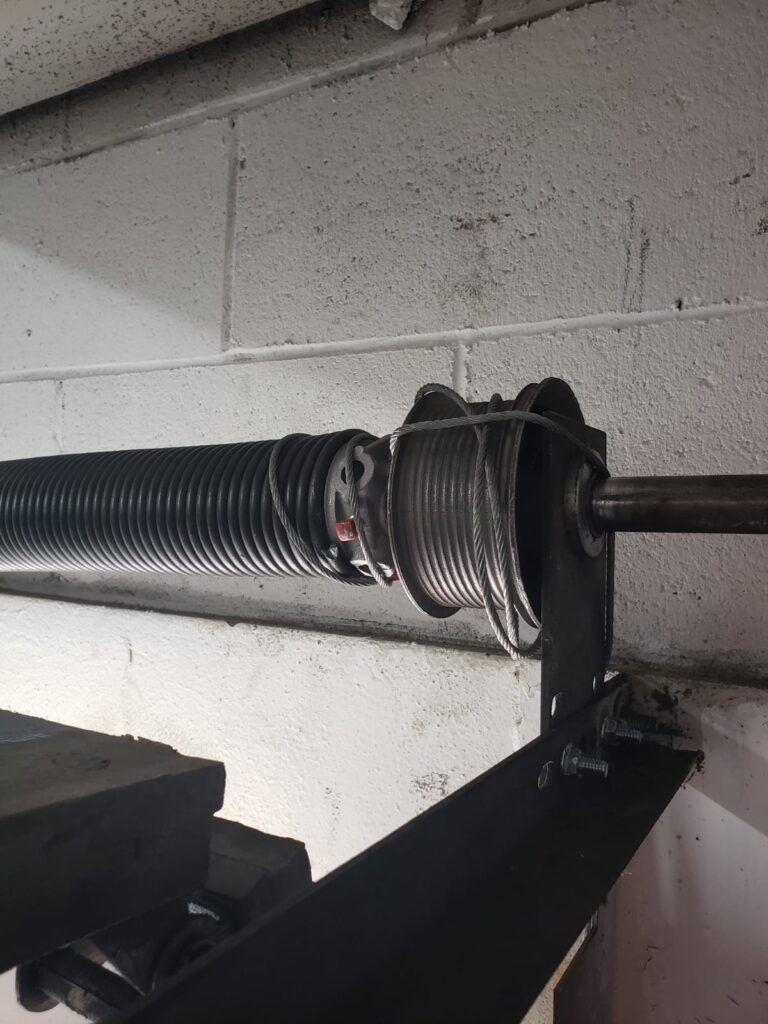
All residential garage doors have cables. A cable is made of strands of galvanized steel and works together with the springs to support the weight of the garage door. The garage door cables are determined by the weight of the garage door.
Im numbers:
For standard-lift residential garage doors, the cable length should be the door height plus 18 inches. When measuring an old cable, measure the full length including loops, spools, thimbles, and stops. Raw cable of 3/32″, 1/8″, 5/32″, 3/16″, and 1/4″ diameters is also available. If the garage door is particularly heavy, thicker cables are used and will require bigger and heavier garage door springs.
The cable should go from the bottom of the garage door, up to the top of both sides of the door. The cables will wrap around a drum at the top on each side when the garage door opens.
Problems can occur when the tension on the cables is too tight. You can tell this when you notice the garage door is not closing all the way. If the garage door cable is too loose, the monitor will not allow it to move as it cannot grasp the cable. If it hits the ground too heavily, it will break. Therefore, garage door cables need to be snug but not too tight or loose and straight on the drum track to function properly.
The cables work on a track and as the garage door goes up or down, the garage door cables on the track will either loosen or tighten appropriately. While it may sound confusing, the cables in the garage are not hard to replace or repair when done by an experienced professional.
While it may sound confusing, the cables in the garage are not hard to replace or repair when done by an experienced professional.
What Happens When a Garage Door Cable Breaks or Snaps?
Garage door cables are an important piece of the garage door function. They help support the weight of the garage door. When a cable snaps or breaks, the door will lift on the side with the intact cable. The more times you try to open the garage door, the worse this problem will become. Your garage door may become stuck and may need to be moved manually. This has the potential to cause serious injury. Even if the cable does not totally break or snap or if you notice frayed wires or hear noises, you should stop using the door and immediately give us a call we can replace most cables the same day.
Garage Door Cable maintenance:
It is important to maintain the garage door cables on your garage door on a regular basis. The Cables wear over time, especially in colder climates such as Canada. Check the bottom of the cables because that is the part most often exposed to moisture and remove any dirt or buildup. Old toothbrushes and other soft-bristled brushes work best. If the cable itself is worn or frayed, call a technician for repair because it too is under high tension.
If you maintain your garage door and cables it is relatively easy to determine when a problem arises. Check your garage door cables regularly and look out for any signs of fraying or bends. You should also check the garage door pulleys as they too can tear or wear out over time. Cables should appear clean. Any dirt or debris from lubricants should be removed as lubricants attract dirt. This can lead to future issues with the cables. Regardless of anything, a broken garage door should be assessed by a garage door service professional. If you try and manage it on your own, the garage door may suffer further damage, and this may lead to a more expensive repair. It is always preferable to leave the repairs to the professionals to avoid injury.